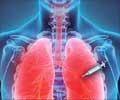Diagnosis
Sarcoidosis can be detected during a routine examination even in the absence of symptoms. A chest X-ray, enlarged tear or salivary gland or cysts in the bone tissue can provide clues to the presence of the disease.
There is no single test that will establish the diagnosis of sarcoidosis.
A chest X-ray gives a clear picture of the heart lungs and adjoining lymph nodes, providing the first sign of the disease.
Pulmonary Function Tests (PFT) will aid in evaluating the function of the lungs and will also help the doctor to suspect the presence of granulomas, if the need be.
Blood tests help to analyze the quantity and quality of blood cells besides quantitating various immuno-proteins and serum calcium levels. The blood level of Calcium maybe raised in certain situations where the bone is involved. Blood tests aid in detecting abnormal liver function and to measure the level of Angiotensin Converting Enzyme (ACE), which is high in sarcoidosis patients. But this enzyme can be increased in other illnesses too.
Bronchoalveolar lavage uses a long, narrow tube with a light at the end, called a bronchoscope —to wash out substances from the lungs. This evicted material is then examined to evaluate lung activity. Increased numbers of WBCs indicate inflammation of the lung tissues.
Biopsy of the lung can provide the final diagnosis. This is carried out with the help of a bronchoscope.
Gallium scanning involves the injection of the radioactive element Gallium-67 into the vein of the patient. The affected body parts collect the gallium. A couple of days after the procedure, the body is monitored for radioactivity. Increased gallium uptake indicates inflammation. This test is not definite as other illnesses too show similar reactions.
Slit-lamp examination is carried out to detect silent eye damage from sarcoidosis.







